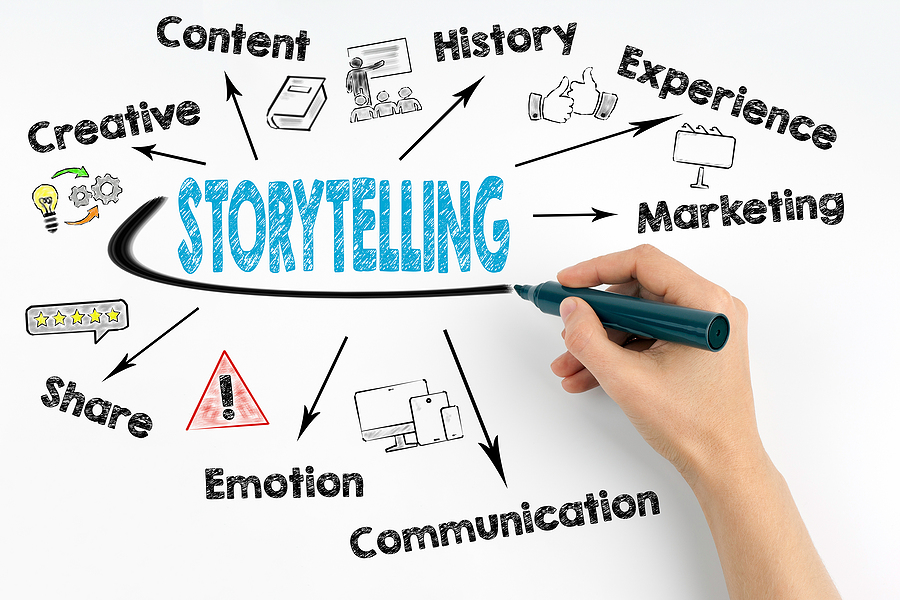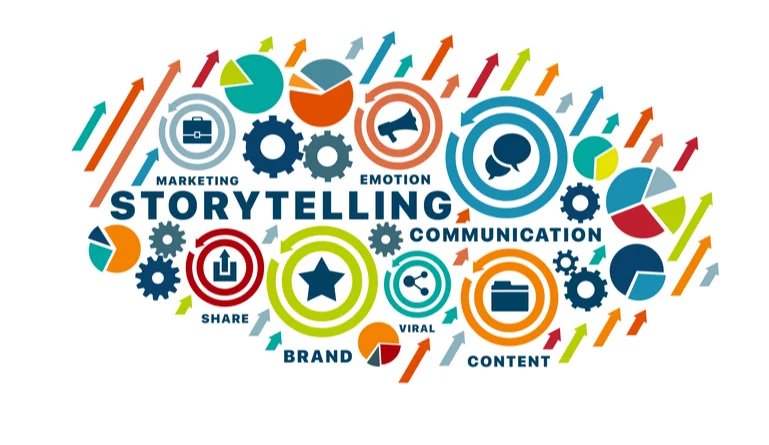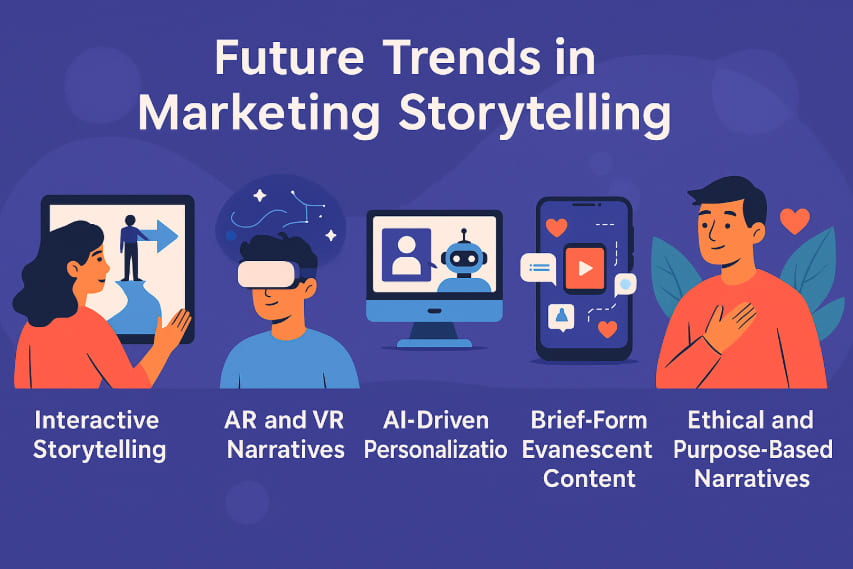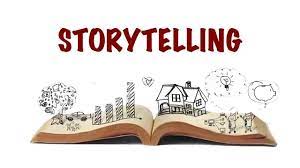Introduction
In the rapidly changing landscape of digital marketing, there is one age-old principle that remains significantly influential: storytelling. As consumers become increasingly intelligent and resistant to conventional sales strategies, storytelling provides a human touch to engage, influence, and convert. Whether you’re exploring digital marketing services in the UK or crafting global campaigns, the ability to tell compelling stories remains a key differentiator. It is the art of integrating facts into narratives that move the audience on an emotional level. Why, then, is storytelling so effective in marketing? How can brands leverage its power to create stronger connections, generate loyalty, and ultimately increase sales? This blog delves into the mechanics of storytelling in marketing, its psychological basis, and actionable tips to make it happen.

Also Read – Unlock the Power of Cross-Promotion Content in Digital Marketing
The Psychology Behind Storytelling
The Human Brain is Wired for Stories
Long before books were invented, humans have been passing on knowledge, customs, and culture through stories. The human brain naturally processes and remembers stories better than raw facts. When we are told a story, several sections of the brain get activated language processing areas, sense centers, and emotional centers all combined to provide a living picture and recall.
Emotional Engagement
Stories engage emotions, and emotion influences decision-making. A good story can arouse empathy, enthusiasm, fear, or inspiration, which in turn influences perception and behavior. People pass on and recall emotional information more easily than plain facts, making storytelling a must-have for viral marketing.
The Science of Trust
Storytelling generates trust. When a brand repeatedly shares honest, familiar stories, it builds a sense of familiarity and trust. Consumers are more likely to purchase from brands they trust, and storytelling creates the gap between business and consumer.
Elements of a Powerful Marketing Story
Characters
Any narrative requires a protagonist, and for marketing purposes, this customer. Putting the customer in the spotlight allows them to visualize themselves as part of the narrative. The supporting cast could be represented by brand spokespeople, influencers, or the product itself.
Conflict
Conflict is the challenge or pain area faced by the protagonist. This generates tension and makes the audience interested. Conflict, in marketing, typically symbolizes the problem or need of the customer which the product or service is capable of solving.
Resolution
The brand offers the resolution as a solution to the customer’s problem. It shows how the product or service addresses the issue of the customer, resulting in a positive outcome.
Setting
A Setting is important. Setting creates background that makes the tale accessible. It may be the customer’s daily life, historical time, or a situation people experience on a regular basis.
Call to Action
A good marketing story always has a call to action (CTA). Having emotionally connected with the audience, it tells them what to do next—visit a site, sign up for a newsletter, or buy something.
Forms of Marketing Stories
Brand Origin Stories
These stories explain how the founders created the company or developed the product. They emphasize values, obstacles, and milestones that make the brand human and establish emotional connections.
Customer Success Stories
Otherwise referred to as testimonials or case studies, these account for actual customers who have been positively impacted by the product or service. They are effective social proof.
Behind-the-Scenes Stories
They give a sneak peek into the operations of the company, its culture, or employees. They humanize the brand and bring transparency.
Educational Stories
Educational stories that educate the audience on something worthwhile while quietly weaving in the message of the brand. They are commonly employed in content marketing.
Mission-Based Stories
They highlight the brand’s dedication to a greater purpose or cause, like sustainability, equality, or community service.

Storytelling Channels in Marketing
Web and Blog Content
Your blog and website are perfect places to tell long stories. From around pages to blogs, they present chances to relate detailed stories.
Social Media
Social media platforms such as Instagram, Facebook, TikTok, and LinkedIn are great places for short, visually oriented stories. Utilize images, videos, and captions to create effective stories.
Video Marketing
Video provides vibrant storytelling using visual elements, voice, and soundtracks. From explainer films to mini-documentaries, the medium provides high-impact engagement.
Email Marketing
Marketers can use emails as a direct channel to send serialized tales, customer stories, or founder letters.
Advertising Campaigns
Short ad copy can be narrative. Consider classic ads that told a story in a few seconds or a single photograph—such as Nike’s “Just Do It.”
Crafting Your Brand Story: A Step-by-Step Guide
- Define Your Core Message: What is the key concept or principle you wish to convey? This must be consistent with your brand’s purpose and appeal to your audience.
- Know Your Audience: Study your audience’s demographics, interests, and pain points. Craft your story to address them directly.
- Develop a Narrative Arc: Organize your story with a beginning (setup), middle (conflict), and end (resolution). Provide a logical progression that creates emotional investment.
- Select the Proper Medium: Determine if your story is best conveyed in video, blog post, social media, or another vehicle. All mediums have their advantage.
- Be Real: Steer clear of overly produced and fake stories. Realness establishes credibility and enables your narrative to become believable and personal.
- Add Visuals: Employ images, infographics, or video to supplement storytelling. Visuals grab attention and support the message.
- Test and Refine: Track metrics of engagement like views, shares, and conversions. Employ A/B testing to optimize your storytelling strategy.
Real-Life Examples of Storytelling in Marketing
Apple
Apple’s marketing is less about product specs and more about what the products enable people to do—make music, share with loved ones, and live their passions. Their “Shot on iPhone” campaign features user-generated content, telling great stories with images only.
Airbnb
Airbnb makes hosts and travelers the heroes through highlighting their stories. Such a strategy transforms a transactional service into an experience of a community.
Dove’s “Real Beauty” Campaign
Dove changed the narrative from ideals of beauty to self-esteem by sharing stories of real women in order to subvert stereotypes and connect emotionally.
Measuring the Impact of Storytelling
- Engagement Metrics: Consider likes, comments, shares, and time on content. These are measures of how well your story is connecting.
- Conversion Rates: Measure how many viewers perform the desired action after interacting with the story.
- Brand Sentiment: Track social media mentions and sentiment to see how your narrative impacts public opinion.
- Customer Retention: Emotional connection-driven storytelling can enhance customer retention and lifetime value.
Future Trends in Marketing Storytelling
- Interactive Storytelling: Technology makes it possible to create immersive, choose-your-own-adventure experiences. These drive engagement and personalization.
- AR and VR Narratives: Companies are looking into augmented and virtual reality to craft memorable, experiential moments of storytelling.
- AI-Driven Personalization: Artificial intelligence can be used to create Marketers can use artificial intelligence to create customized stories based on user behavior and interest .
- Brief-Form Evanescent Content: Short-form, vanishing content on the likes of TikTok and Instagram Stories creates an intimate and genuine feel.
- Ethical and Purpose-Based Narratives: With consumers wanting more meaning from purchases, brands are turning to ethical narratives based on values such as sustainability, fairness, and belonging.

Also Read – 12 Top storytelling marketing examples: how brands tell stories
Frequently Asked Questions (FAQs)
What is marketing storytelling?
Marketing storytelling is the deliberate employment of narrative methods to deliver a brand message, product value, or customer experience in a palatable and engaging form. It facilitates emotional bonds between the audience and brand.
Why is marketing storytelling effective?
Storytelling connects on an emotional level, helps people remember more, and earns trust. Others are more apt to recall and connect with a brand message if it is contained within a narrative rather than just given as straight facts or numbers.
What makes a fantastic marketing story?
An effective marketing narrative generally consists of a protagonist with which the audience can identify, a conflict or challenge, an emotional trajectory, and a defined resolution—sometimes mirroring the value proposition of the product or service.
Can visual storytelling assist with marketing?
Yes. Visual storytelling with videos, infographics, or drawings raises engagement with content. Instagram, YouTube, and TikTok live off visual storytelling that touches and converts.
How do small businesses apply storytelling?
Small businesses can share real-life stories about how they started, customer testimonials, or why they created something. Realistic, human-centered stories make a brand more relatable and gain the trust of the community.
What are some examples of marketing storytelling?
Some examples are Nike’s “Just Do It” campaigns, Apple’s user-focused product stories, and Dove’s “Real Beauty” campaign. Brands employ real-world stories, values, and emotion to engage with their audience.
How can the success of a storytelling campaign be measured?
Key measurements are engagement (likes, shares, comments), conversion rates, brand recall, time on page, and customer feedback. Monitoring these will tell you whether your story is engaging with your audience.
Should it be used in B2B marketing?
Yes. In B2B too, decision-makers are emotional and trustable humans. B2B storytelling can emphasize customer success stories, industry problems, or a company’s path to innovation.
Conclusion
Storytelling is not only a strategy it’s a mindset. It changes the focus from selling to relating, from transactions to relationships. Amidst today’s information overload, stories break through the clutter by engaging the human need for connection and meaning. Whether you’re a small business or an international brand, or working with a digital marketing agency in the UK, powerful storytelling can amplify your marketing, build stronger audience connections, and drive sustained business growth. Through your understanding of the audience, well-told narratives, and utilization of the correct platforms, you can turn your brand message into a story that is worth being told and recalled.



